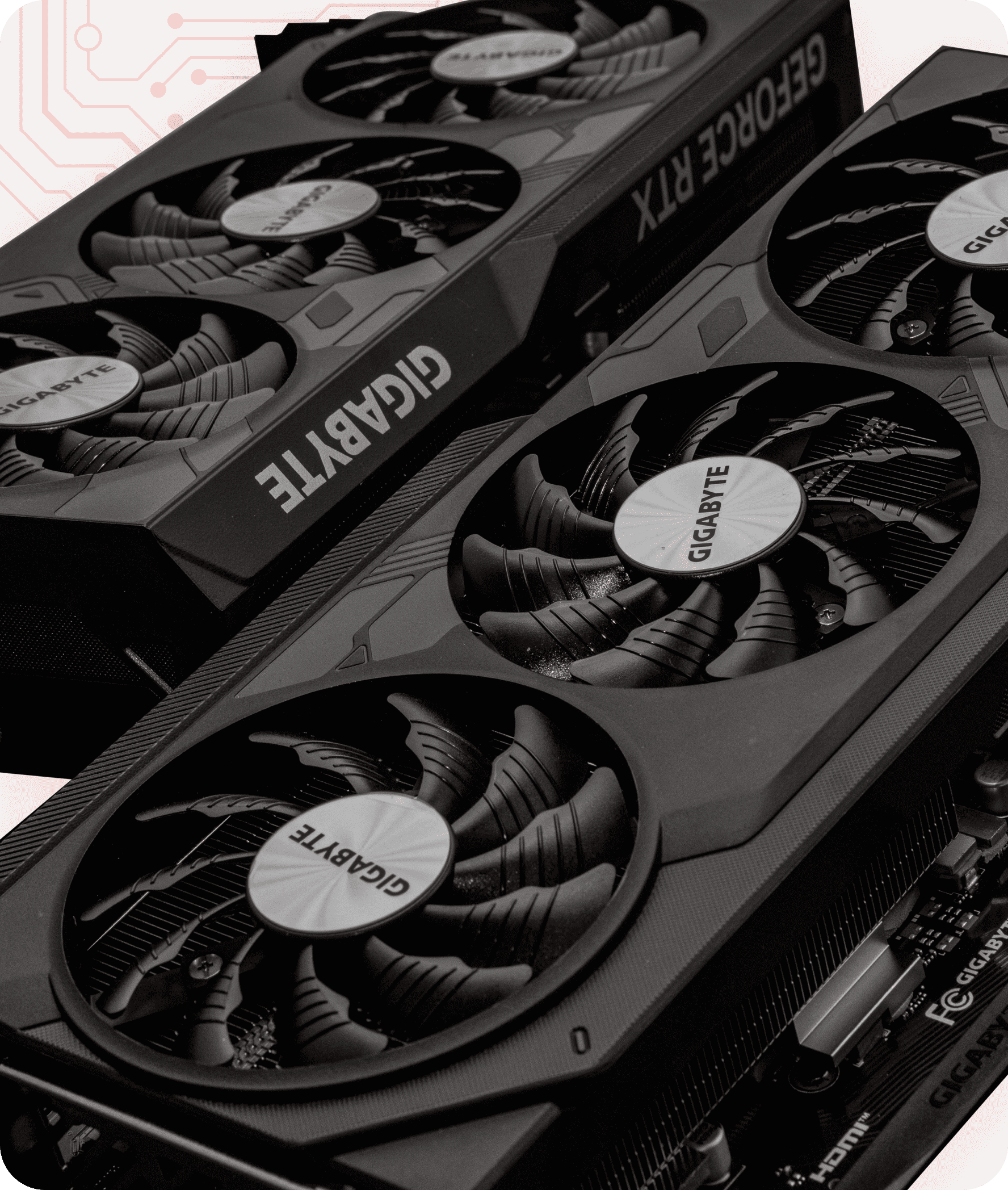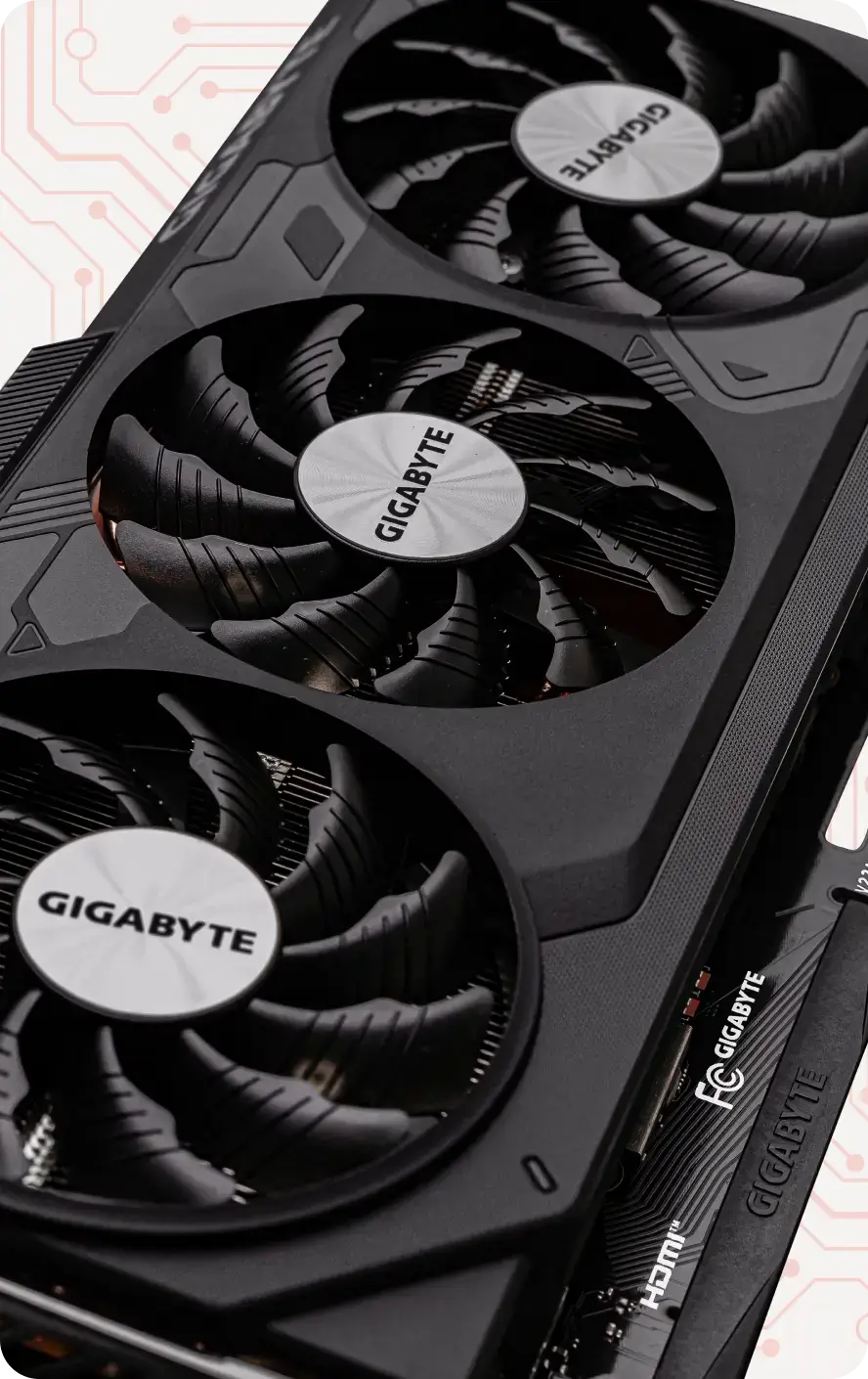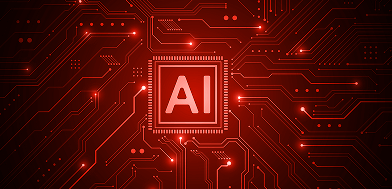High Scalability
Instantly scale computing resources based on the size and complexity of your AI workloads. This is especially beneficial when handling fluctuating data volumes.
Good choice for new websites
24/7 managed VPS
Low cost VPS





Home » GPU Hosting » AI Hosting
Designed for training neural networks and deploying intelligent applications.
Get Started Guide
High-performance RTX 4070 Ti SUPER & NVIDIA GeForce RTX 5080 Ti

Flexible Payments

Multi-core CPUs

Faster training for large language models (LLMs)



 OS: Ubuntu 22.04 + LLM
OS: Ubuntu 22.04 + LLM 



 OS: Ubuntu 22.04 + LLM
OS: Ubuntu 22.04 + LLM 



 OS: Ubuntu 22.04 + LLM
OS: Ubuntu 22.04 + LLM 



 OS: Ubuntu 22.04 + LLM
OS: Ubuntu 22.04 + LLM 


With thousands of processing cores, the GPU powered by dual 4070 Ti and GeForce RTX 5080 Ti matrix operations and calculations in parallel. This significantly accelerates AI training tasks compared to traditional CPUs.
GPUs efficiently manage the intense computational requirements of deep neural networks and recurrent neural networks, which are essential for developing sophisticated deep learning models, including generative AI.
Superior GPU performance, particularly with the dual 4070 Ti’s 16GB GDDR6X memory and 7,680 CUDA cores, and and GeForce RTX 5080 Ticores, is ideal for compute-intensive workloads, including dynamic programming algorithms, video rendering, and scientific simulations.
GPUs offer high memory bandwidth and efficient data transfer capabilities, enhancing the processing and manipulation of large datasets for faster analysis. The 4070 Ti’s and and GeForce RTX 5080 Ti 21 Gbps memory speed and advanced architecture reduce data bottlenecks, accelerating workloads.

 Oobabooga Text Gen UI
Oobabooga Text Gen UI PyTorch (CUDA 12.4 + cuDNN)
PyTorch (CUDA 12.4 + cuDNN) SD Webui A1111
SD Webui A1111 Ubuntu 22.04 VM
Ubuntu 22.04 VM Also: At the request, we can install any OS
Also: At the request, we can install any OS 
AI Hosting: Unlock the Full Potential of Your Artificial Intelligence Projects
As artificial intelligence technologies rapidly evolve, the demand for AI hosting solutions with AlexHost has grown exponentially. Whether you're developing machine learning models, training neural networks, or deploying advanced AI applications, the infrastructure you use plays a critical role in your project's success. AI hosting provides the performance, scalability, and flexibility needed to power data-intensive AI workloads in real time. In this article, we explore how AI hosting works, why it's essential, and how to choose the right provider for your needs.

At the heart of AI hosting lies the need for immense computational power. GPU servers for AI are purpose-built to accelerate processing tasks that are otherwise too intensive for traditional CPUs. These servers are equipped with high-performance graphics processing units that can handle parallel processing, making them ideal for deep learning, natural language processing, and computer vision tasks.

GPU-powered environments significantly reduce the time required for training large-scale AI models. With dedicated GPU servers, data scientists and engineers can iterate faster, optimize algorithms more efficiently, and achieve better model accuracy — all while reducing operational bottlenecks.
Hosting for AI provides several strategic advantages for businesses and developers working on intelligent systems

Instantly scale computing resources based on the size and complexity of your AI workloads. This is especially beneficial when handling fluctuating data volumes.
Pay only for what you use. AlexHost offers flexible billing options, including hourly or usage-based pricing.
Access to high-end GPUs, like i9-7900x (x10) and Ryzen™ 9 3950X (x16), NVMe SSD storage, and large memory capacities, which are essential for efficient model training and inference.
Our Data Center in Moldova is a good choice to minimize latency and ensure high availability in different regions.
Protect sensitive AI data with enterprise-grade security protocols and compliance certifications

GPU-powered environments significantly reduce the time required for training large-scale AI models. With dedicated GPU servers, data scientists and engineers can iterate faster, optimize algorithms more efficiently, and achieve better model accuracy — all while reducing operational bottlenecks.
When selecting an AI GPU server hosting, it's crucial to evaluate the provider's hardware specs, support options, network infrastructure, and pricing model. Look for servers that include
The latest NVIDIA (2x RTX 4070 Ti SUPER) or AMD GPU architecture (e.g.Ryzen™ 9 3950X and i9-7900x)
Dedicated resources (no noisy neighbors)
High-bandwidth networking (minimum 1 Gbps)
Support for major AI frameworks like TensorFlow, PyTorch, and JAX
Option for bare metal or virtualized environments
Additionally, AlexHost offers pre-configured AI environments, making it easier to get started without lengthy setup times.

AI hosting with AlexHost can be used across a wide
variety of use cases, including but not limited to:
Train models for text generation, translation, sentiment analysis, and chatbots.
Develop facial recognition systems, medical image diagnostics, or video analytics.
Analyze historical data to forecast trends, customer behavior, or maintenance schedules.
Build applications that generate images, music, code, or text based on training data.
Simulate environments for robotics, gaming, and autonomous agents.
Whether you’re a startup building the next AI-powered SaaS product or a research institution running complex simulations, hosting for AI provides the foundational infrastructure you need to succeed.

